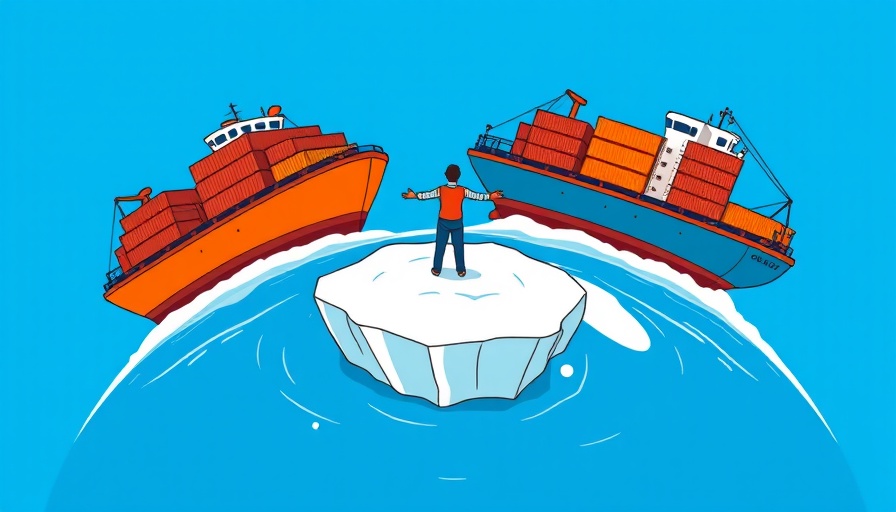
Why Ships Are the New Chips: Understanding a Global Shift
In today’s complex global economy, the interplay between trade assets and technological advancements shifts almost daily. Ships, once considered mere carriers of goods, have emerged as critical players in our economic infrastructure, akin to semiconductor chips in the tech world. As we navigate various supply chain disruptions and geopolitical tensions, understanding why ships are taking center stage is key to grasping the new dynamics of commerce.
The Current Environment: A Perfect Storm
The challenges facing global supply chains have been significant—shipping costs have soared and delays have become the norm. These changes make the maritime industry a hot topic, especially in regions like Silicon Valley where technology and transportation intersect. Companies reliant on efficient transportation systems are feeling the heat, highlighting just how critical maritime logistics are to sustaining business growth.
How the Bay Area Connects to Maritime Trends
The Bay Area’s business environment, particularly its startups and tech giants, is increasingly participating in this conversation. As venture capital funding flows into sectors focused on shipping technology—such as analytics for shipping routes or sustainable vessels—the region's entrepreneurs are now vying to tame the shipping beast, much like they did with earlier technological innovations.
Parallel Example: The Semiconductor Shortage
Just as chips became scarce due to digital demand, ships are starting to reflect similar shortages, showcasing the overlap between two critical industries. Much like manufacturers adapted to adapt to semiconductor shortages, sectors dependent on shipping must innovate to counter current maritime hurdles. This parallel illustrates how intertwined global markets can become and how adaptability is essential for survival.
Future Trends: Is Shipping Innovation On the Horizon?
Looking to the future, it is plausible that advancements in shipping technology will make maritime transport more efficient and sustainable. Innovations such as autonomous vessels or increased use of biofuels may soon revolutionize how goods are shipped across the globe. Initiatives driven by corporate social responsibility will focus on minimizing environmental impacts while maintaining high efficiency in shipping operations, especially important in the competitive Bay Area market.
Embracing the Ship Revolution: Key Insights
Understanding why ships are becoming the new chips offers vital insights for business leaders today. As the emphasis on shipping technologies grows, companies must consider how they can leverage these innovations to enhance operational efficiency and reduce costs. Whether this means investing in the maritime tech ecosystem or adapting business strategies can determine a company’s success in a fluctuating market.
Concluding Thoughts on the Maritime Economy
As we explore the future of commerce, recognizing ships as critical technological assets highlights the need for adaptability in business strategies. The intersection of technology and shipping can shape the future of trade as dramatically as silicon chips shaped the last few decades. For entrepreneurs and long-standing businesses alike, the call to action is clear: embracing the potential within the maritime industry is essential for sustained business growth in this new era.
Get Involved in Bay Area Business Developments
To navigate these changes effectively, businesses should engage actively with industry organizations and stay connected to emerging trends. By participating in local business events and networks, you can discover invaluable insights and potential collaborations that may lead to exciting opportunities in the evolving landscape of shipping and trade.
 Add Row
Add Row  Add
Add 



Write A Comment